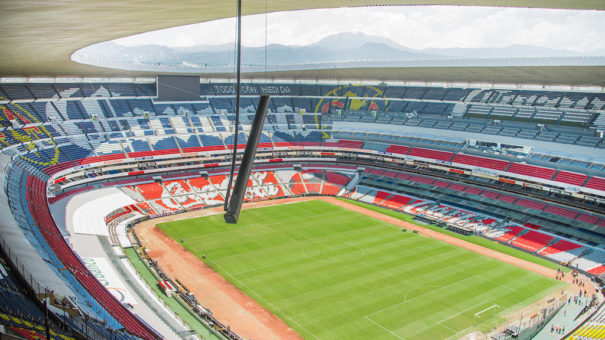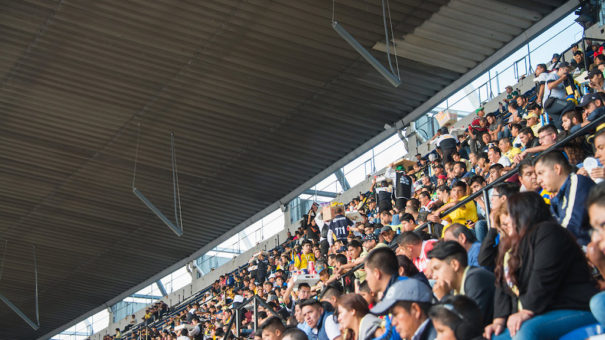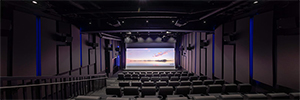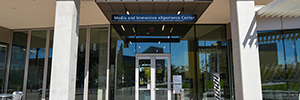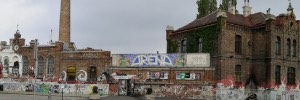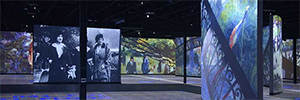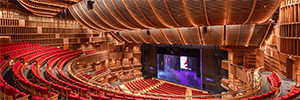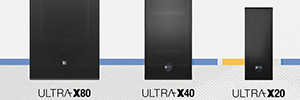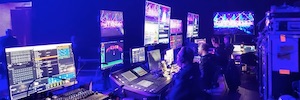Meyer Sound aporta sus sistemas CAL con tecnología de red AVB/TSN al Estadio Azteca de México
Este sistema de audio distribuido con esta tecnología de red es el primero que Meyer Sound instala en un espacio de deporte y multiusos.
Primer estadio en organizar dos finales del Mundial de Fútbol -en 1970 and in 1986-, y en sede principal de los primeros Juegos Olímpicos de América Latina (1966), the Estadio Azteca de Ciudad de México suma a estos hitos en ser la instalación deportiva situada a mayor altitud (2.195 m.) y la de mayor capacidad (87.000 people) de América Latina.
A esta lista de distinciones se sumó a principios de este año el haber completado la instalación más grande hasta la fecha de altavoces de columna Meyer Sound CAL. In addition, se trata del primer sistema de audio de este fabricante instalado en un estadio que utiliza lo último en tecnología de red AVB/TSN.
El sistema distribuido, composed of 69 Speakers, emite en todo el ancho de banda anuncios de voz con nitidez e inteligibilidad, música ambiental, así como y el audio de los vídeos proyectados en las pantallas digitales de Panasonic ubicadas en el recinto.
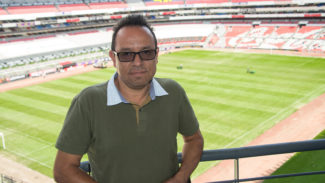 La tecnología de direccionamiento de los CAL permitió a los ingenieros de Meyer Sound ajustar con precisión la extensión e inclinación del audio proyectado, y así lograr una cobertura uniforme, mientras que el perfil estrecho de los altavoces CAL mantiene las líneas de visión abiertas.
La tecnología de direccionamiento de los CAL permitió a los ingenieros de Meyer Sound ajustar con precisión la extensión e inclinación del audio proyectado, y así lograr una cobertura uniforme, mientras que el perfil estrecho de los altavoces CAL mantiene las líneas de visión abiertas.
“Contactamos con Meyer Sound para este nuevo sistema porque nos ofrecieron la mejor solución -recuerda el gerente de audio del Estadio Azteca, Alejandro Aguirre (in the attached image)-. Necesitábamos lo último en tecnología de audio, y el sistema CAL con AVB cumplía todos nuestros requisitos”.
Para las gradas inferiores se han desplegado 24 altavoces CAL 64, along with 10 subgraves de 600-HP, mientras que las superiores están cubiertas por 26 CAL 96 y ocho altavoces CAL 64, con un CAL 96 adicional que cubre la superficie de juego. Dos procesadores de red Galaxy 816 controlan el sistema general, y dos RMServers en la red se encargan de la supervisión del estado y resolución de problemas.
Los Galaxy 816 están conectados al conmutador máster, ubicado en la sala de control del estadio, a través de AVB/TSN, con señales bidireccionales enrutadas a través de una red de fibra óptica desde la sala a los once conmutadores locales, distribuidos alrededor del estadio.
Cada conmutador local se conecta a su grupo asignado de altavoces CAL a través de cable Cat-5e. Todos los conmutadores son de la serie Extreme Networks X440-G2.
Como explica Aguirre, “el estadio alberga una gran variedad de eventos además de fútbol: Concerts, eventos religiosos y los partidos anuales de la NFL. Era esencial que tuviéramos audio inteligible en cada asiento, con la potencia y la claridad necesarias para ofrecer una experiencia completa de visualización y escucha junto con las pantallas HD; que hemor resuelto con Meyer Sound”.
Este directivo reconoce que la solución completa dependía, además de la innovación tecnológica, del diseño y el soporte. “El equipo de Meyer Sound estudió cada detalle; se aseguraron de que las personas adecuadas participaran en el proyecto y nos aconsejaron en cada paso. Hay un nivel de compromiso que los diferencia de otras compañías de esta industria”.
You liked this article?
Subscribe to our Feed And you won't miss a thing.



